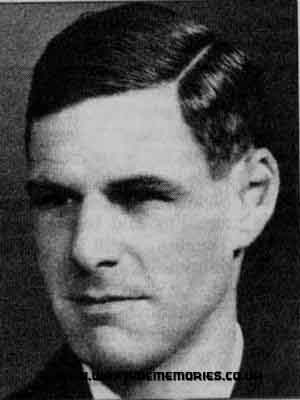For Captain Lennox Napier’s inspired and courageous captaincy of the mine laying submarine Rorqual, he was appointed DSO in 1943 and won the DSC in 1944. Napier, who had been in the submarine service since 1934, took command of Rorqual, a Porpoise class submarine in June 1941. With the capture of Crete, it was imperative that Malta did not fall into German hands. Under daily siege, Malta had to be supplied with both food and fuel for domestic purposes, as well as for its RAF Squadrons fighting for the survival of the island. A number of convoys had run the gauntlet from Gibraltar or Alexandria to Malta and all had suffered casualties.
Admiral Andrew Cunningham, Commander-in-Chief of the British Naval Forces in the Mediterranean, boldly decided to use the Rorqual and her sister submarine Cacholot to get supplies to the island. One associates a submarine with confined space, but Rorqual, launched at Barrow in 1936, was 280 feet long and had a beam width of 29 feet. On her first voyage to Malta, she carried a vital cargo of two tons of medical supplies, 62 tones of high-octane aviation spirit for the RAF’s Hurricanes, 45 tones of cooking fuel and 25 passengers, as well as a crew of 59; but perhaps most important, at least for the island’s morale, 147 bags of mail. On her return to Alexandria, amongst her somewhat lighter cargo, were 130 bags of mail.
It was fraught and nerve-wracking week before Rorqual arrived in the Grand Harbour, much to the relief of crew and islanders. A month later she arrived back in Malta with a similar cargo. An even larger cargo was carried on 31 July, but Napier was concerned when during heavy weather a number of fuel cases stored in the hull developed leaks. This resulted in the submarine’s diving almost seven tons light when these tins were empty in the morning, and slowly filling up with water and re turning Rorqual to normal trim while submerged in the daytime.
After this trip, Napier was pleased to get back to his normal route of mine lying Rorqual could carry 50 mines. Napier’s skill in laying these mines, in the often crystal-clear water of the Mediterranean, brought him a number of successes. In August 1942, his men blew up an Italian steamer. Later that month, he engaged two merchant vessels, sank one and then had his periscope rammed by the other. Although under orders not to engage enemy shipping, because he was carrying vital stores and passengers, Napier attacked a convoy and destroyed the last ship. The passengers had an interesting experience as 16 depth charges were dropped close by.
In January 1943, Rorqual laid mines off the Tunis approach, one of which caused the loss of the valuable German heavy-lift ship Ankara, loaded with tanks for Rommel’s Afrika Corps. This success was reinforced when he sank the Wilhelmsburg, carrying much-needed oil to Greece, with two torpedoes at 2,500 yards in the Dardanelles approach.
After two and a half years of successful command Napier fell ill with jaundice. On recovering, he went to the land-based HMS Dolphin to train future commanding officers for the submarine services.
Lennox Napier was a descendant of John Napier, the inventor of logarithms.




